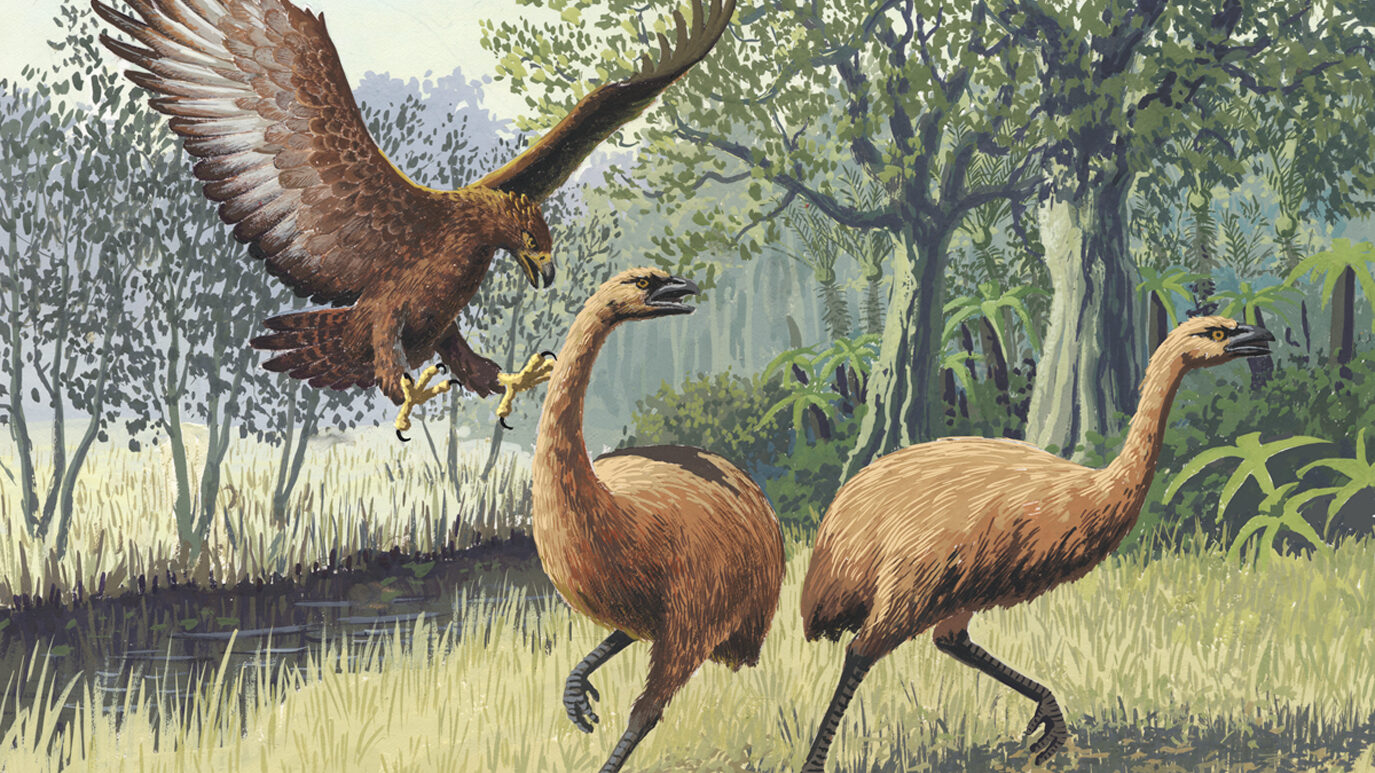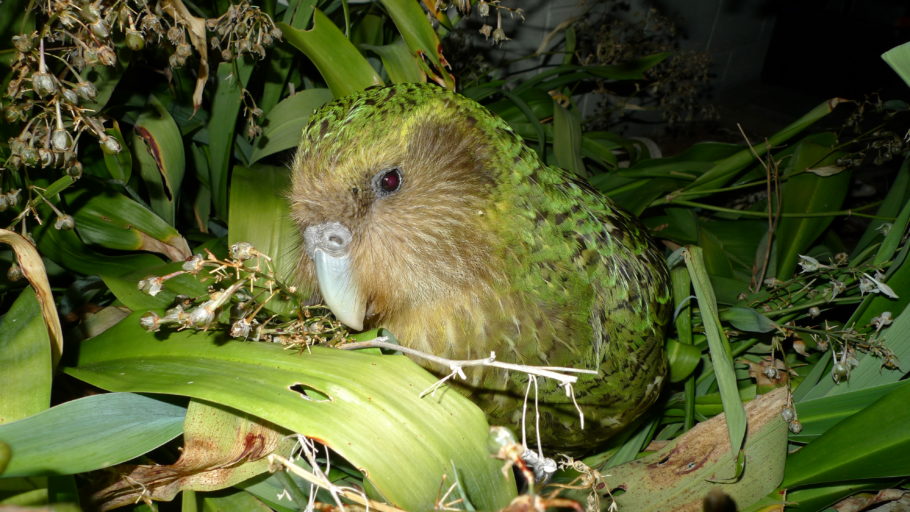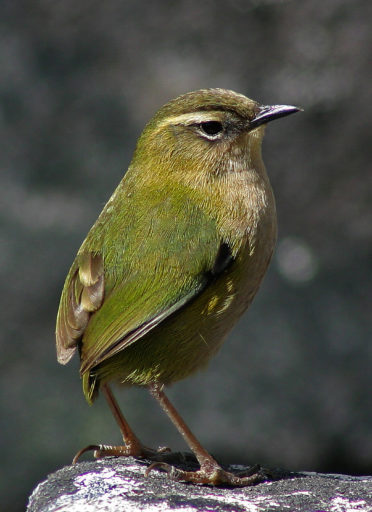The conservation decisions we make today will have an impact for millions of years! That’s the conclusion of authors Luis Valente, Rampal Etienne and Juan Garcia, who use New Zealand’s unique bird species as an example of the macroevolutionary impact of humans, in an article recently published in Current Biology. So why did this team of international authors choose New Zealand for their study?

“The unique avifauna of New Zealand is an excellent example to study the role of human occupancy in disturbing natural communities. New Zealand was the last major habitable land area to be settled by humans. Polynesian Maori arrived about 700 years ago and Europeans have been present for 200–300 years. Although all bird species known from Late Pleistocene deposits survived into the period of first human occupation, nearly half were driven to extinction during the following years of settlement. The avifauna of New Zealand suffered one of the largest waves of extinction documented.”
“The high incidence of flightlessness (over a third of land bird species upon human arrival), large body size, and behavioral naiveté have contributed toward susceptibility of native birds to hunting, introduced species and land-use change—a recurring pattern in most isolated islands worldwide. Despite innovative conservation efforts in the country over the last 50 years, over 30% of extant species remain threatened with extinction, and nearly two thirds could be under threat in the future.”
According to the authors, if New Zealand’s currently threatened birds go extinct, the macroevolutionary impact could be 10 million years. That means up to 10 million years will be needed to return to today’s biodiversity levels by natural evolutionary processes.
So what exactly is macroevolution? Macroevolution generally refers to evolution above the species level. So instead of focusing on an individual bird species, a macroevolutionary viewpoint might ‘zoom out’ on the tree of life, to assess the diversity of groups of birds descended from a common ancestor and the position of those bird groups on the evolutionary tree.
There’s endemic – plants and wildlife found no-where else in the world – and then there’s deeply endemic, those of our birds, reptiles, plants and insects that have their own branch of the evolutionary tree without even a distant relative to be found elsewhere. Tuatara, kiwi, kakapo and our native wrens are all deeply endemic – unlike any other species alive today – and if such unique wildlife are lost, the evolutionary tree doesn’t just lose one twig. It loses a whole branch.
“New Zealand’s biota is known for its evolutionary distinctiveness and unusual species composition. Despite its origins as an ancient continental fragment, New Zealand has a distinctively insular character, leading Alfred Russel Wallace to declare that its “wonderfully isolated” biota resembles that of oceanic islands. A remarkable feature of New Zealand is that, unlike other large landmasses, its vertebrate fauna has long been dominated by birds, many of which form highly distinct evolutionary lineages,” the authors write.
Aotearoa is often called ‘a land of birds’ for that reason.

“The Quaternary avifauna of New Zealand includes examples such as a giant nocturnal parrot (kakapo), the flightless moa and the country’s national bird, the kiwi. A characteristic feature of New Zealand is the taxonomic and ecological uniqueness of its bird clades, generally attributed to its prolonged geographical isolation and/or ancient Gondwanan heritage. Compared to other similar-sized landmasses, there are relatively few species of land (non-aquatic) birds, most of which are found nowhere else. The country harbours several groups forming deep isolated phylogenetic branches, including the sister clade of parrots (Strigopoidea) and passerines (New Zealand wrens, Acanthisittidae) and two endemic clades of palaeognaths (kiwi and moa), the sister group to all other birds.”
When a bird, animal or insect becomes extinct, we not only lose that species. We lose the ‘work’ of millions of years’ worth of evolution that created that unique species and it takes millions more years for nature to restore that biodiversity and evolutionary loss.
“A vast number of island birds have gone extinct since human colonization, and an important proportion is currently threatened with extinction. While the number of lost or threatened avian species has often been quantified, the macroevolutionary consequences of human impact on island biodiversity have rarely been measured. Here, we estimate the amount of evolutionary time that has been lost or is under threat due to anthropogenic activity in a classic example, New Zealand.”

The authors have been doing the maths and running mathematical modelling. They’ve calculated how many millions of years’ worth of biodiversity we’ve lost in New Zealand since humans first arrived here. They’ve also worked out the evolutionary impact if our current ‘at risk’ species should go extinct. The answer – up to 10 million years – is a number that’s bigger than all the years that humans have existed on Earth. What’s more, that estimate of 10 million years assumes biodiversity is left to evolve under its natural trajectory of colonization and speciation with no further human-induced extinctions.
So where do the numbers come from?
To calculate the macroevolutionary loss, the authors reconstructed the diversity dynamics of New Zealand birds. They used fossil and ancient DNA information, to compile a dated dataset of the evolutionary development and diversification of land bird species – creating a timeline for the growth of New Zealand’s evolutionary tree.
“We extend the method DAISIE developed for island biogeography to allow for the fact that many of New Zealand’s birds are evolutionarily isolated and use it to estimate natural rates of speciation, extinction, and colonization.”
“Under the best supported macroevolutionary model of bird species accumulation in New Zealand, bird species colonized at a rate of 4.7 events every million years (Ma), while new species originated through both cladogenesis and anagenesis at a rate of 0.125 and 0.33 speciation events per lineage per Ma, respectively, and went extinct through natural extinction at a rate of 0.19 extinction events per Ma. Because extinction exceeds the rate of cladogenesis, avian biodiversity on New Zealand is maintained by colonization; i.e., New Zealand constitutes a macroevolutionary sink for birds. Simulations of the model reveal a good fit to the data.”
“Our analyses reveal that in addition to its impact on global avian diversity, anthropogenic activities on islands have also led to a huge loss of evolutionary history. The island evolutionary return time metric shows that it would take 50 million years of bird evolution to build up the diversity that has been wiped out from New Zealand in the last 700 years, 4 Ma to recover the diversity lost in the less than 250 years since Europeans arrived, and up to 10 Ma to recover the diversity that is currently under threat.”
“This study puts into macroevolutionary perspective the impact of humans in an isolated fauna and reveals how conservation decisions we take today will have repercussions for millions of years. Luckily, New Zealand’s pioneering bird conservation efforts may yet prevent millions of years of evolutionary history from further being lost.”
The full article is published in Current Biology. Only a brief summary is freely available to non-subscribers but author contact details are given.
Deep Macroevolutionary Impact of Humans on New Zealand’s Unique Avifauna (2019)

